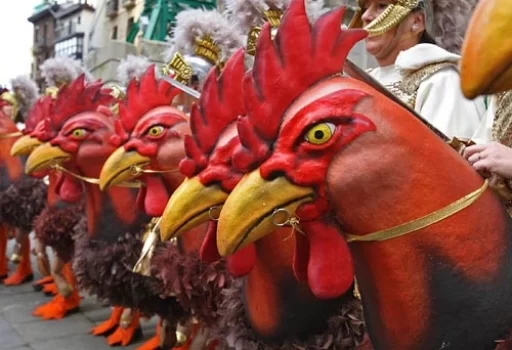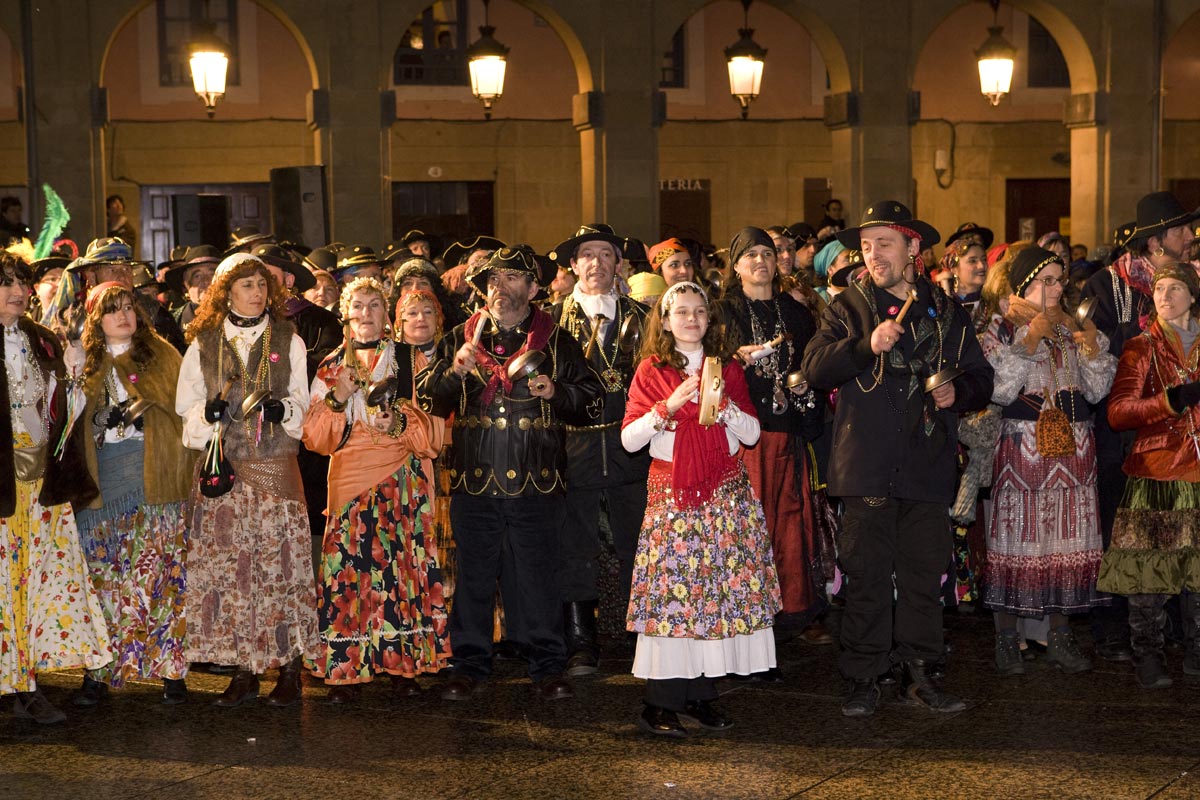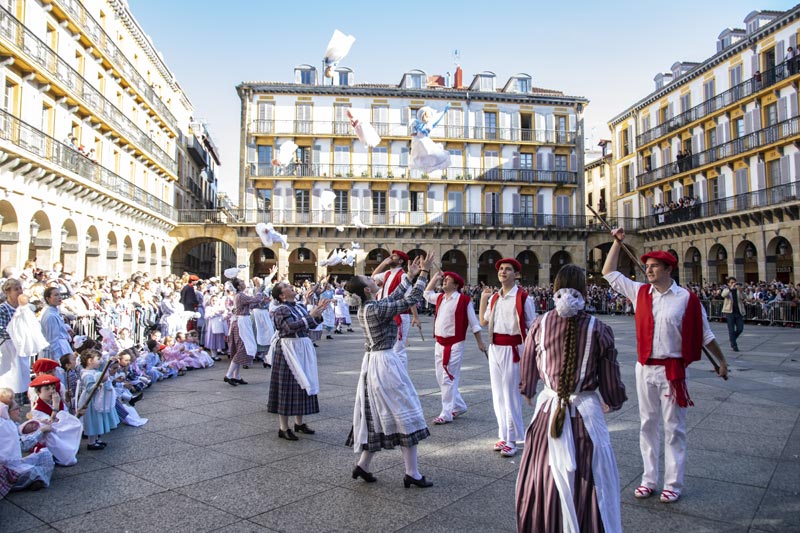Traditional carnival of San Sebastian

In the Basque Country, carnival is a very important festival, it is the most important festival of the year in many towns, such as Tolosa or Lantz, and in Donosti, although the most important date is the Tamborrada, this is only the prelude to the carnival that is celebrated just a few weeks later.
The San Sebastian carnival
The San Sebastian carnival has been celebrated as we know it today since the late 1970s, and in addition to the troupes that dance all together in the streets of the city in the evenings and change their theme every year, there are others that usually go out independently and always wear the same costumes. These are the troupes of the traditional carnival or historical troupes.
These originated in the 19th century and although during a large part of the 20th century they disappeared or appeared intermittently, they were recovered in the 1970s and 1990s and are now an indispensable part of our carnival. These comparsas are the following: Caldereros, Iñude eta Artzaiak, Jardineros, Caballería de Gallos and Percebes.
Caldereros (Boilermakers)
On 2nd February 1884, the Caldereros de la Hungría troupe was formed for the first time, representing those transhumant artisans belonging to nomadic tribes who used to pass through San Sebastian to repair metal utensils and pots and pans. Nowadays, different groups of Caldereros go out in the different neighbourhoods of San Sebastian and also in some of the surrounding villages. They always go out on the Saturday closest to Candelaria (2nd February) in the afternoon, at nightfall.
With the help of wagons, decorated floats and even a bear, they bang pans with hammers to make themselves heard, always singing songs composed by Raimundo Sarriegui. And their retinue includes the queen of the Caldereros, a most beautiful “woman”.

Caldereros in la Consti. Photo by Donostia Kultura.
Iñude eta Artzaiak (Nannies and Shepherds)
A year later than the Caldereros, in 1885, the troupe of Iñude eta Artzaiak came out for the first time. This troupe recalls the courtship between the nannies who worked for the wealthy families of the city and the shepherds who came down to the capital. Nowadays we can also see Iñudes eta Artzaiak in other towns in Gipuzkoa, always on the Sunday closest to Candelaria, normally the day after the Caldereros leave in the morning.
In addition to the Iñudes and Artzaias, who dance in pairs, the troupe also includes other characters from the period, such as the bishop, the mayor and his wife, altar boys, a wafer seller… And of course, the music is also from Sarriegui.

Iñude eta Artzaiak in la Consti. Photo by Donostia Kultura.
Jardineros (Gardeners)
The Jardineros troupe is the oldest in San Sebastian, having first appeared in 1818. Characterised by their large headdresses full of flowers, this troupe goes out on the carnival weekend in the Old Town of San Sebastian, and is the only one that dances and sings, always to the music of master Sarriegui.
Caballería de Gallos (Cavalry of Roosters)
This troupe has been known since at least 1882, when it was the 24th troupe. The name of this troupe comes from its representative costumes, Roman soldiers mounted on roosters who dance to the rhythm of Sarriegui’s music (as it could not be otherwise). Their most distinctive song, named after the troupe, is one of the songs of the Tamborrada and is one of the funniest. Like the Jardineros comparsa, Caballería de Gallos goes out in the Old Town during the carnival weekend.
Percebes (Barnacles)
The troupe of Percebes has also been taking part in carnival since the 19th century and today belongs to the Unión Artesana. With a marine theme, it not only features barnacles, but also jellyfish, fishermen, starfish and seahorses… All accompanied by Sarriegui’s music, obviously, although some of his characteristic songs have been lost. Like the previous troupes, their time is the weekend of carnival, when they go through the streets of the Old Town.